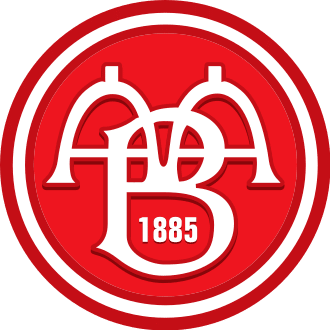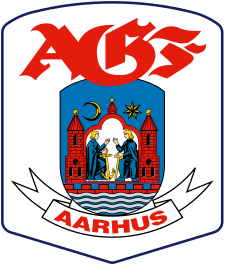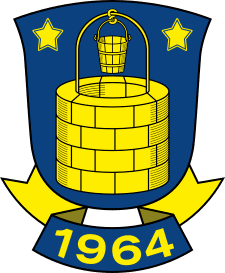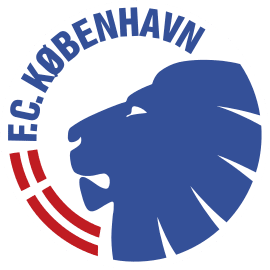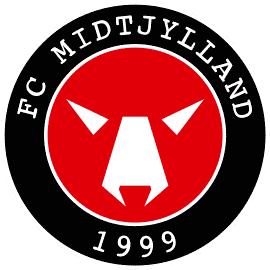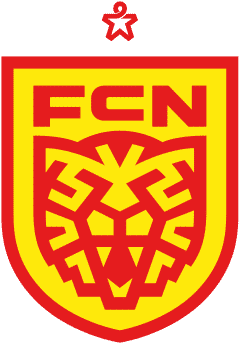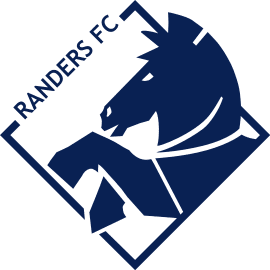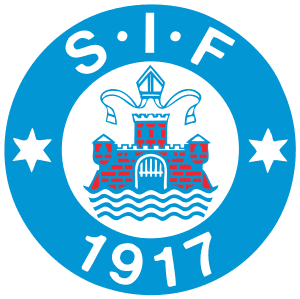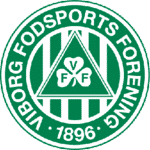AaB Fodbold Tryouts & Club Guide: History, Stadium, Players, and More!

Welcome!
Discover the world of soccer with fcscout.com, your go-to scout for club tryout information, club guides, player profiles, in-depth product reviews, and more. We’re dedicated to exploring and revealing the best in each domain, empowering you with knowledge to make informed choices.
Thank you for being here!
Hi, I’m Carlos! A coach, sports enthusiast, and the founder of FCScout.com.
I fell in love with the game at a very young age like many of you. I’ve been following and playing soccer for many years.
Throughout my career, I always enjoyed helping soccer players chase their dreams, which is why I started this website. I wanted to reach a larger audience outside of my local area and fcscout.com was born.
This website is a platform I will be using to update club pages on any tryouts, stadiums, players, tech, and more from clubs around the world. I also create free recruitment profiles for players looking to have that extra competitive edge when reaching out to clubs.
That’s it. That’s my pitch for you to stick around (or browse the site as you please).
This is already too much text for a “see more” drop-down button thing. If you want to reach out to me, head on over to my contact page 🙂

Aalborg Boldspilklub af 1885 is a Danish football club based in Aalborg, Denmark. The club currently plays in the Danish Superliga, the country’s highest football league in Denmark.
AaB Fodbold Youth Development System
The AaB Academy, formerly known as AaB Talent, was established in its current form in 2008 with the aim of qualifying the club’s elite work and optimizing the development environment for selected boys’ players throughout North Jutland.
AaB Akademiet is part of the parent club AaB of 1885, and at the same time helps to build a bridge between AaB´’s amateur department and AaB´’s professional department. At AaB Akademiet, we work primarily with players aged 12-19 and with the teams U / 13-U / 19. All in all, this means that there are persistently approx. 100 players divided into five teams affiliated with our department.

AaB Akademiet places great demands on itself and has a long tradition of developing players at a high level. AaB Akademiet is today one of the leading talent development environments in Denmark and each year receives recognition for its talent work. Partly due to generated profiles such as. Kasper Kusk, Mathias Ross, Lucas Andersen and Joachim Mæhle, and partly because the club today has the highest percentage of its own development players in its Superligatrup of all Danish clubs and in the top 10 in Europe in number of minutes of play for its own breeding players.
However, we have even greater ambitions and dreams, as we want to create Scandinavia’s best academy – the AaB-way. The academy’s team competes at the highest level in Denmark, and to match our players at the very highest level, our team participates in several elite tournaments throughout the season – both at home and abroad.
As AaB is the entire North Jutland Team, AaB Akademiet also feels a great responsibility to support and develop the football environments and the talent pool that exists in the region aged 9-12 years. This is done through our great commitment to FNF (Fælles Nordjysk Fodboldsamarbejde) and including in collaboration with Hobro IK and Hjørring IF Samarbejdet supports initiatives for the benefit of the collaboration’s many partner clubs and including for the benefit of children’s football throughout North Jutland.
In September 2020, AaB entered into a major collaboration with the IT company Netcompany on the AaB Academy.
The collaboration provides a platform for optimizing AaB’s talent department, among other things with increased individual training, mental training and better opportunities for international matching, and at the same time a greater collaboration between Aalborg University, Netcompany and AaB will help strengthen the use of data about 3F Superliga team.
In addition, the collaboration includes a focus on stimulating and disseminating grassroots sports in Aalborg East through projects at nearby primary and lower secondary schools. Likewise, the collaboration through projects with Aalborg University’s technical educations will cultivate innovation and entrepreneurship in North Jutland.
Academy Mission
AaB Akademiet’s mission is to create and develop players for AaB’s Superligatrup in collaboration with the football community in All of North Jutland
Academy Vision
Through Scandinavia’s best academy – the AaB-way – we want to create the international football player of the future

Academy Objectives
- Best academy in Scandinavia in terms of playing time on the first team of own breeding players
- At European level (CIES calculations): 40% of the SL playing time on the first team is played by own breeding players
- Will have 15 AaB players represented on the U national teams every year
- 20 stars from DBU in the license rating within a 5-year period from summer 2021
- Develops a minimum of 2 players from the Academy each year, who are part of the SL squad / Develop 10 players for the SL squad over 5 year periods from summer 2021
- That U19 is placed in the top-3 so we are guaranteed European matches
- That at least half of the Superliga squad are own breeding players
- that all players are in training and succeed in combining football with the education they want
- that we help the U / 19 players who do not get a Superliga contract, on to the desired and appropriate football level – AaB of 1885, cooperative clubs at division level or other cooperative clubs
- that we have a cooperation agreement with at least 80% of all North Jutland football clubs
- that all employees are well trained.
Recruitment Procedure AaB Academy
Mathias Krogh is responsible for recruitment to AaB Akademiet, mak@aab-as.dk – questions about club changes, club change processes, procedures, and inquiries from agents should be directed to Mathias.
Recruitment to the AaB Academy follows:
- An evidence-based selection process, in which we, in a holistic perspective and with the involvement of several experts, who we know raise the validity of our decisions.
- DBU’s ethical guidelines for club change: https://www.dbu.dk/boern-og-unge/boernefodbold/dbus-holdninger/etisk-retningslinjer-for-klubskifte/ .
- DBU’s circular 67 regarding the protection of players under the age of 15: https://dbu.dk/media/8195/cirkulaere67.pdf .
To ensure the best possible transition and security in a given selection process, it is an ambition for us at AaB that as many players as possible are included in a training course prior to club change.
Questions regarding training courses in the AaB Academy should be directed to course coordinator Thomas Justesen, tj@aab-as.dk
Questions about TOP center and talent engineering school should be directed to Emil Adelborg, ema@aab-as.dk
Aspirant & Course
Aspirant or Course is for the talented player, who in U13-U15 has not been selected for an elite team in the AaB Academy, but who AaB wants to work with. Click here to learn more.
AaB annually recruits a number of players to an elite team in U13 via. the licensing system. At the same time, there are a number of talented players who are not offered a club change to AaB, but who AaB still has a great interest in working with in close collaboration with the player’s own club. These players can AaB Akademiet offer Aspirant or Training courses in U13-U15.
It is not possible for the player’s own club to nominate a player for an Aspirant or Training Course in AaB. However, we have a great desire to always receive information from our Partner Clubs about players in U13-U15 who are developing and doing exceptionally well. Then we will take a closer look at the player and decide whether there is any. must be offered an Aspirant or Training course at AaB.
Aspirant
As an aspirant, you are selected by the AaB Academy , and the course is organized in close collaboration with parents and club. As an aspirant in U13, you train 9 times a year in AaB, in U14 7 times a year and in U15 5 times a year. Aspirant matches can also be called. Aspirant activities can be, but are not necessarily, together with the year’s elite team in the AaB Academy .
Course
AaB can select a player for a training course with an elite team in the AaB Academy . This course is organized in close collaboration with parents and club. In a training course, the player will train with the year’s elite team in the AaB Academy 1-2 times a week for a longer period, but will still play weekly matches in his own club.

EXPLORE MORE CLUBS!
Explore more professional clubs by continent.
AaB Fodbold History
On May 13, 1885, English engineers who were working on the construction of the railway infrastructure in Jutland founded AaB. During the organization’s formative years, the sport of cricket served as the primary focus of attention. In the year 1899, the original name of the club, Aalborg Cricketklub, was changed to the current name, Aalborg Boldklub, which translates to “Aalborg ballclub.”
The Aalborg Boldspilklub af 1885 has been primarily focused on football ever since the year 1902, when the sport was first made available to amateurs. The club’s name was altered to its current form in 1906. Aalborg BK was able to compete in the highest level of Danish football competition from the 1928–1929 season all the way up to 1947, when the team was demoted.
Aalborg BK has competed in a number of Danish football championships since returning to the top flight in 1963, with the exception of the years 1972, 1978, and 1981–1986, and with the exception of the years 1972, 1978, and 1981–1986, respectively. Despite the fact that the club participated in the Danish championship for a significant number of years, it was never able to bring home the trophy. Despite this, Aalborg BK was victorious in the battle for the Danish Cup in 1966 and 1970.
In 1978, the Danish Football Association was the first organization in Denmark to provide games for a fee. 1987 was the year that Aalborg BK founded the professional department of AaB A/S in order to prepare for their return to the top Danish level and take on the responsibility of managing a professional football team. The decade of the 1990s saw the club claim its first two titles at the Danish level.
During the 1994–1995 season of the Danish Superliga, Erik Bo Andersen helped his team, which was coached by Poul Erik Andreasen, win the championship. Erik Bo Andersen led the league in scoring with 24 goals during that season. The squad was initially eliminated from contention by Dynamo Kyiv in the qualification rounds for the 1995–1996 UEFA Champions League, but Kyiv was ultimately disqualified from the competition, and Aalborg BK took their place.
Aalborg BK became the first Danish team to compete in the UEFA Champions League as a direct consequence of this. Aalborg BK was eliminated from contention after they won their first group stage game at home by a score of 2-1 against Panathinaikos but then drew their second game with Porto by a score of 2-2. Following Erik Bo Andersen’s departure for the Scottish side Rangers, the team’s goal scoring position was taken up by Sren Frederiksen.
In the 1998–1999 season of the Danish Superliga, which the team won under the supervision of Swedish coach Hans Backe, Frederiksen scored 17 goals despite not being the league’s leading scorer. The squad won the championship. Aalborg BK once again faced Dinamo Kyiv in the qualifying for the Champions League, but they were unsuccessful once again, losing both games by the scores of 1-2 at home and 2-2 in Kyiv when a late goal by Aalborg BK was disallowed for being outside the goal line. Dinamo Kyiv advanced to the next round of the Champions League qualifying.

After that, the squad finished in third place in the Superliga, took home the bronze medal, and qualified for the UEFA Intertoto Cup the following year. Aalborg was victorious over Honka in the second round by virtue of the away goals rule (2-2 in Finland and 1-1 in Denmark). In the third and final round, Aalborg BK competed against Gent and tied with them 1-1 away from home before going on to win 2-1 at their own venue.
They “earned” a spot in the second qualifying round of the UEFA Cup, in which they competed against HJK, as a result of this. In the first match, Helsinki was victorious by a score of 2-1, while Aalborg BK was victorious in the last match by a score of 3-0 and earned a spot in the tournament for 2007–08. When Antonio Cassano and Vincenzo Montella of the Italian team Sampdoria were drawn in the First Round, it gave the impression that the work would be challenging.
Aalborg became the first Danish team in history to ever “send an Italian team out of Europe” when they qualified for the group stage once more using the away goal rule (getting 2-2 in Genoa and managing 0-0 in Aalborg). This allowed them to become the first Danish team to ever qualify for the group stage. As the team with the lowest seed in the group stage, Aalborg BK was given the draw for the group that included Anderlecht, Tottenham Hotspur, Getafe, and Hapoel Tel Aviv. After playing at home and drawing with Anderlecht and going on the road and losing to Tottenham, Aalborg was necessary to win their match against Getafe, which they ended up losing 1-2. (after being leading 2-0 after the first half).
During the 2007-2008 season, Aalborg won its third Danish Championship and advanced to the qualification stages of the UEFA Champions League for the 2008-09 season. Aalborg cruised to a 7-1 victory over FK Modria in the overall score in the second round of qualifying. They defeated FBK Kaunas 2-0 in the third round, which was the round that came before the group stage, both at home and away.
As a result, they advanced to the group stage of the Champions League for the second time, becoming the first Danish team to do so. They were placed in Group E for the group stage, which they would compete in alongside Celtic, Manchester United, and the team that had just won the tournament. After defeating Celtic and finishing in third place in their group, Aalborg moved on to the knockout phase of the UEFA Cup for the 2008–2009 season. During the first game of their journey in the UEFA Cup, they competed against the Spanish team Deportivo de La Corua. Aalborg BK won a total victory of 6-1 by winning the first leg of the tournament at home by a score of 3-0 and then winning the second match away from their stadium by a score of 1-3.
After advancing to the round of 16, Aalborg BK was given the opportunity to take on Manchester City. They were successful in doing so. After suffering a 2-0 defeat in the first leg in Manchester, Aalborg BK was able to mount a comeback and win 2-0 at home to tie the score. The excruciating tie was finally broken when Aalborg was defeated in a penalty shootout by a score of 4-3. On May 11, 2014, the squad won its fourth Danish Championship, and on May 15, 2014, they completed the double by defeating FC Copenhagen 4-2 in the Cup final. This victory clinched the double.
AaB Fodbold Stadium
Aalborg BK matches have been played at Aalborg Stadion continuously since the year 1920. When it first opened on July 18, 1920, the stadium had the playing field oriented in a north-to-south direction. After the first spectator seats were built in 1927, in 1937 work began on constructing a wooden terrace that would eventually have room for 3,000 spectators to stand.

In 1960, a fire completely gutted the stadium, and in 1962, its replacement — a concrete structure oriented in an east-west direction — was opened for business. The stadium had a recent expansion and restoration, which resulted in the addition of several contemporary amenities as well as a roof that covered all of the spectator stands. The stadium has the capacity to hold around 13,000 spectators.
